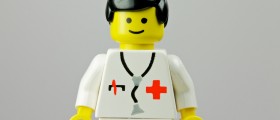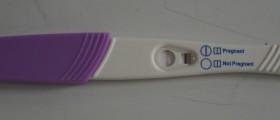
One of the key insights of Natural Procreative Technology is that even when there are "fertility problems", many couples nonetheless are able to get pregnant. Women who suffer anovulation, pelvic adhesions, endometriosis, and PCOS all have gotten pregnant during the program. And over 95 per cent of couples who do not have a fertility diagnosis are able to conceive while using NaProTechnology. The simple basis of the program is that the one certainty about pregnancy is that it begins with sperm fertilizing egg. The first level of intervention in NaProTechnology is aimed at ensuring that sperm and egg can meet. Women are asked to observe changes in their cervical mucus. Thin, "springy" cervical mucus helps the sperm swim farther into the uterus. If the cervical mucus is thick, then the first requested change is just drinking more water. If the woman has a "dry" period, then she is asked to come for blood work to determine any estrogen or progesterone deficiencies.
Men, for their part, are asked to refrain from ejaculation for 1 to 4 days before intercourse. If intercourse in the midpoint of the female partner's period does not result in pregnancy, then the couple will be counseled on timing ovulation, either through basal temperature measurement or with a hormone monitoring system such as the ClearBlue fertility monitor. If these methods are not successful, then there may be treatment with Clomid, or other hormone treatments, and medical remedies for PCOS, endometriosis, pelvic adhesions, and so on. The advantage of NaProTechnology is that it always offers the least expensive, least dangerous, simplest intervention to support couples trying to conceive. The results of NaProTechnology vary, but nearly 100 per cent of couples who do not have a diagnosis of a medical problem and about 50 to 80 per cent of couples who do have a medical issue are eventually able to conceive, usually within the first 24 months. Costs of the system are about 2 to 3 per cent of the cost of IVF.
- Photo courtesy of Jason James by Flickr: www.flickr.com/photos/sidneiensis/14269649121/

















Your thoughts on this
Loading...